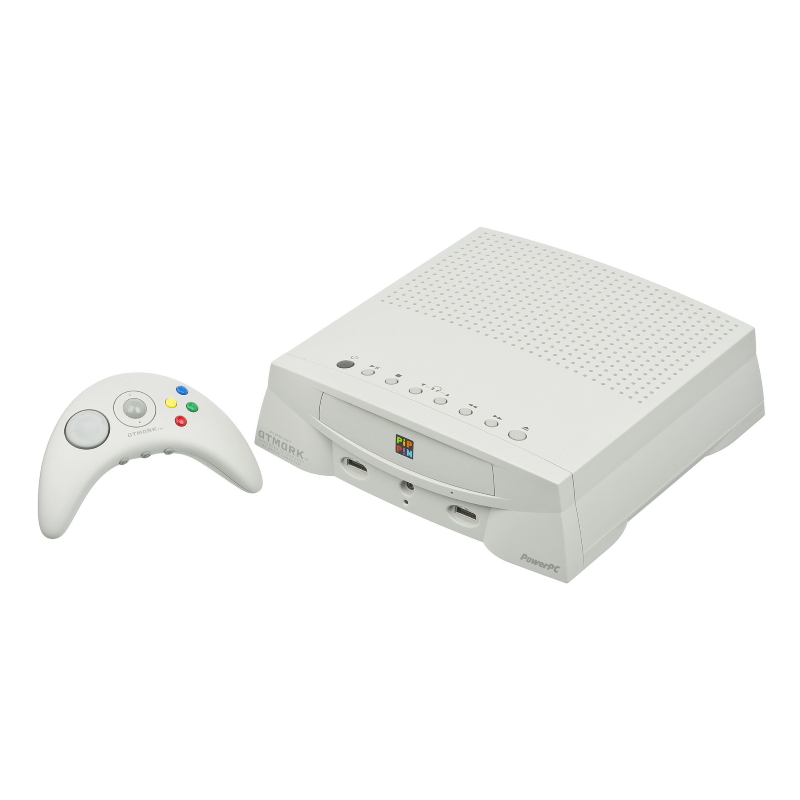|
History
In 1993, Bandai was looking to get back in the video-game console business. At the time, CD-ROM was slowly being introduced as a medium in video games and Bandai though they could capitalize on that to create affordable video game console. They started working on the Playdia,  a video-game console for kids designed to be cheaper alternative to other video console. But Bandai also wanted to release a consolized version of a computer. Microsoft had just pulled out of embedded their Operating System into a gaming console with the failed Tandy
a video-game console for kids designed to be cheaper alternative to other video console. But Bandai also wanted to release a consolized version of a computer. Microsoft had just pulled out of embedded their Operating System into a gaming console with the failed Tandy
Visual Information System (VIS) and FM Town had just released their own consolized version of their computer, so Apple was the only logical choice.
Bandai reached out to Apple in early 1994 with the idea of a gaming console. Apple was really open to the idea. In order to speed up the development and share the risk between the two partners, Apple was put in charge of the design while Bandai would produce the hardware. Apple would remain the owner of the technology and had had the possibility to license it to whomever they choose. Bandai would get the exclusive right to distribute a video game console based on this technology in Japan and the U.S., but aside the licensing right for the rest of the world, Apple could also license the technology worldwide for other non-gaming devices such as telecommunication equipment.
Based on the Macintosh Classic II running System 7. This would ensure easy port of Macintosh software. Like it did for the McIntosh, Apple based the name Pippin on the Newtown Pippin, a kind of apple .On December 13, 1994, Apple announced the Pippin platform in Tokyo, as well as the partnership with Bandai. After this date, Apple and Bandai started working together on the Pippin. Though focus groups, the design was refined, including the addition of a modem for Internet capabilities.
In October 1995, the Nikkei reported that Mitsubishi Electric Corporation would follow Bandai as a licensee to the Pippin technology. Although Mitsubishi didn’t actually sign a license agreement with Apple, it did manufacture the systems for Bandai (and effectively, Katz Media) on an original equipment manufacturer basis.
Release
After a few months delay, the Pippin was finally released in Japan under the name Pippin ATMARK. Makoto Yamashina, CEO and President of Bandai, predicted that 200,000 units would be sold in Japan within a year, but upon release, the consoles sale weren’t very convincing. Bandai was not too worried, and in June 1996, released the Pippin in the U.S. under the name Pippin @WORLD. Since the Pippin was based on the Macintosh, a computer very popular in the U.S., Bandai predicted that it would outsell the Japanese released and than 300,000 units would be sold in the first year. Both units are virtually the same except the Japanese release was white and came with a Japanese version of System 7 while the U.S. release was back with and came with an English operating system. Black Japansese ATMARK system does exist, but they are rare.
On June 4, 1996, Katz Media, a Norway-based software company, announced that they had become the second licensee of the Pippin technology. Katz Media signed the right for Europe and Canada and planned to release 2 configuration of the Pippin by November of the same year. The unit would not be delivered before March 1997.
Demise
Less than a year after its release, the console was already dead in the water. The sale figures were disastrous with the U.S. sale actually being worse than the Japanses one. Many factors contributed to the console demise, including the high price point. Like most hybrid console of this time, the Pippin which was part Internet PC and part video console didn’t excel in any of its primary task. With no killer title and slow access time, the video game aspect of the console was very limited. From a computer perspective, things were better as the console was based on a Macintosh, although browsing the menus and the Internet on the television turned out to be less enjoyable than advertise. While perfect on a VGA monitor, the font used on the System 7 was less than ideal for a CRT television. One of the biggest problems was the fact that, as part of the licensing agreement, Bandai and Katz Media were not allowed to use the term “Computer”, which make it difficult to make potential customers realize that this was in fact a computer. The other problem was that the system only supported PSInet as an Internet Provider. The console did come bundled with 6 months of Internet access for free, but after this delay, the customer had to pay 24.99$ a month. Also,
The final nailed in the coffin came from Steve Jobs. Upon returning to Apple in early 1997, Steve stopped all Macintosh clone efforts, which included the Apple Pippin. Quickly after, Bandai announced that he would stop the production of all models of Pippin on May 12, 1997. Katz Media which had just started to sell their own version of the Pippin, vowed to remain committed to the Pippin and to continue supporting the console. The company had around 100,000 orders of Pippin all around the world couldn’t afford to back down at this point. The company tried to survived but had to file for bankruptcy less than a year later.
Bandai, also took a loss on the Pippin with more than 93 Million spent on marketing alone.
In the end, Bandai had sold only 30,000 units in Japan and 12,000 units in the United States. Unsold U.S. inventory was returned to Japan to be repackaged for sale as the now-rare “Black Atmark”. On February 27, 1998, DayStar Digital purchased all remaining inventory of hardware from Bandai. At this point, Bandai had manufactured around 100,000 units. It is unknown how many were sold by third parties and how many were destroyed.
The project ended up costing 26.8 billion yen to Bandai in losses, bring the company to the brink of bankruptcy.
Console Variation
3 Majors consoles/boxes variation exists for the Pippin.
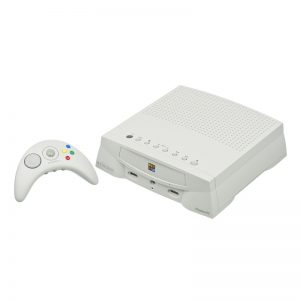 | 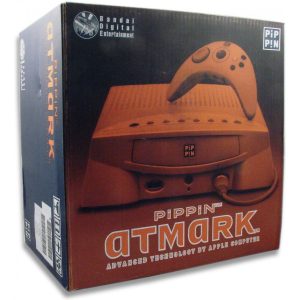 | 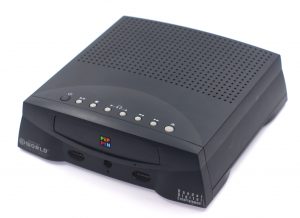 | 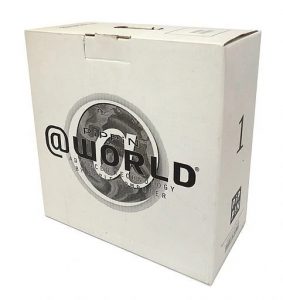 | 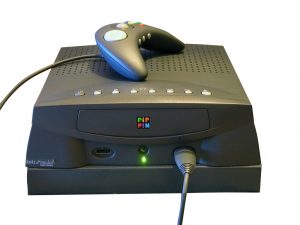 | |
| Pippin ATMARK Japan | Pippin @World United States | Pippin Katz Media Canada, Europe | |||
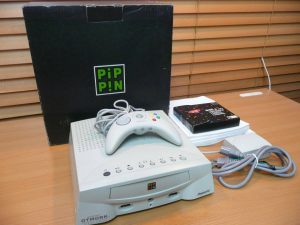 | |||||
| Pippin Power Player¹ | |||||
¹Pippin Power Player (also known as the Pre-release Sample) where development consoles sent to Developer in both Japan and the U.S. in December 1995. Only 3,000 Power Players were manufactured.
Games
Japan has seen more than its fair share of Pippin title with more than 90 disc released for it. In the U.S. only 20 titles were available and in Europe less than 5 were released.

